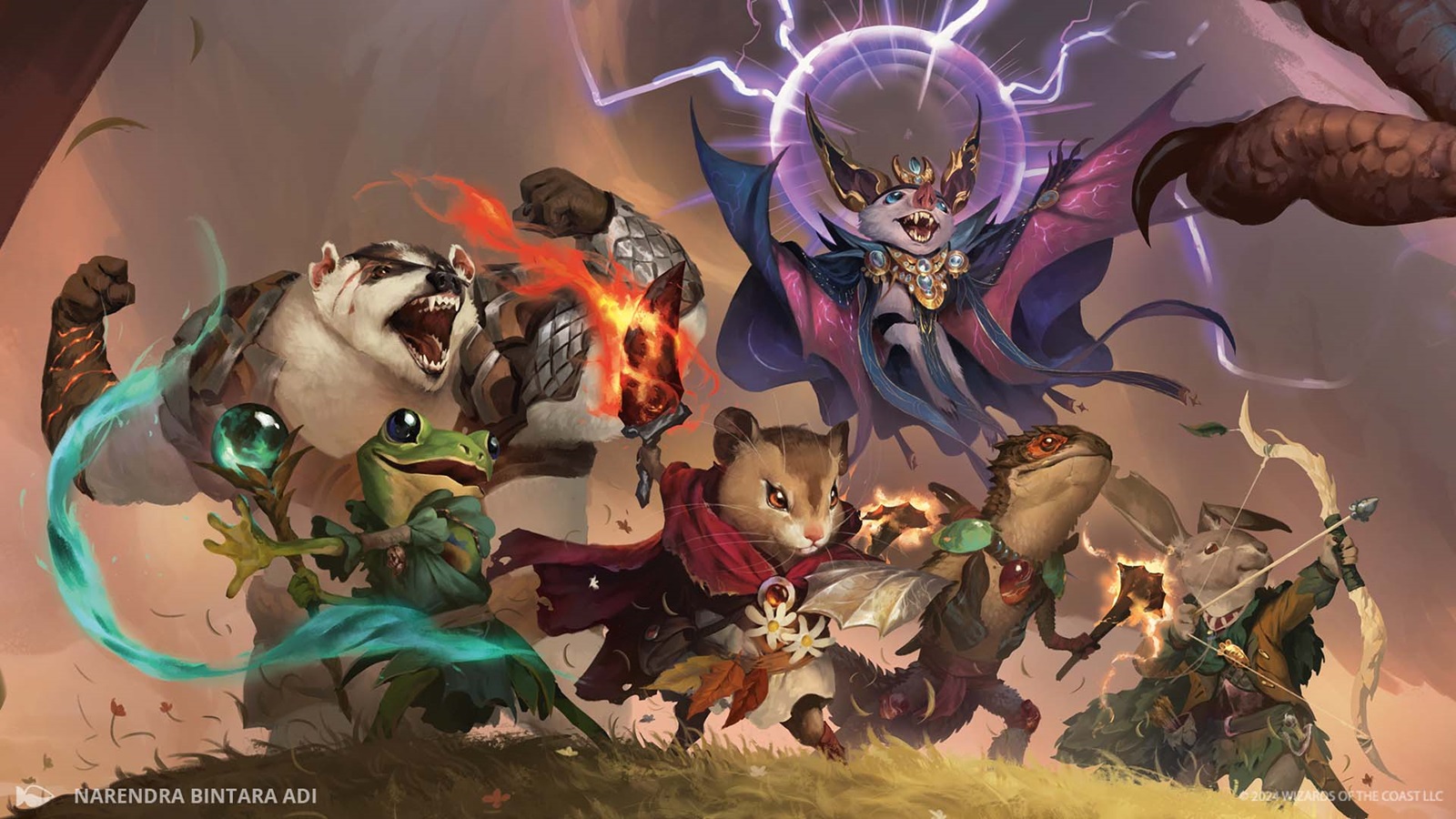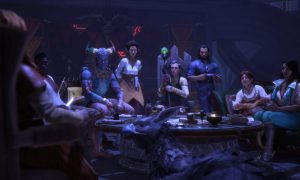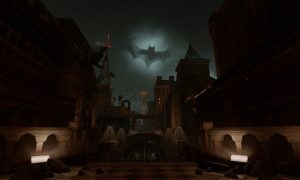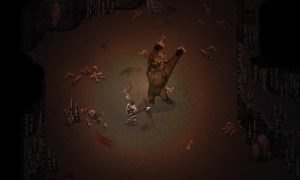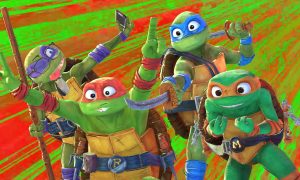Bloomburrow might just be the most hyped set of Magic: The Gathering of 2024. The twee woodland critters style had a lot of people’s attention as something different coming to the game. Even with the variety of themes we’ve had this year alone (noir detectives and weird west) Bloomburrow is indeed a breath of fresh air. It doesn’t hurt that Bloomburrow is also painfully adorable. You wouldn’t hurt a tiny mouse warrior, a sun loving frog druid, or an otter wizard would you? It turns out I will as my favorite card in Bloomburrow is Ygra, Eater of All. It’s a big cat that makes all creatures into food and well…uh…eats them… I’m definitely a monster. Inspired by Redwall or Mouse Guard, Bloomburrow is not only a wonderfully thematic set, it’s also a very well designed set. Let’s explore the world of Bloomburrow and see why it’s a great addition to Magic: The Gathering.
Set Mechanics – Crumb and Get It
There’s a lot going on within Bloomburrow, but let’s start off with Offspring. Offspring is an additional cost when casting a spell that allows you to create a creature token that’s a copy of that card, except it’s always a 1/1. Yes, Bloomburrow lets you put literal children onto the battlefield. This might be the greatest set ever made. Mechanically Offspring adds additional flexibility to your mana. In the early game you might play a creature without Offspring just to get a body on the board, but later on you’ll have somewhere for you extra mana to go. A lot of the creatures with Offspring also help players break any board stalls that may be happening as they have abilities that push your creatures through so they can deal damage. I like Offspring mechanically, but especially thematically. :)
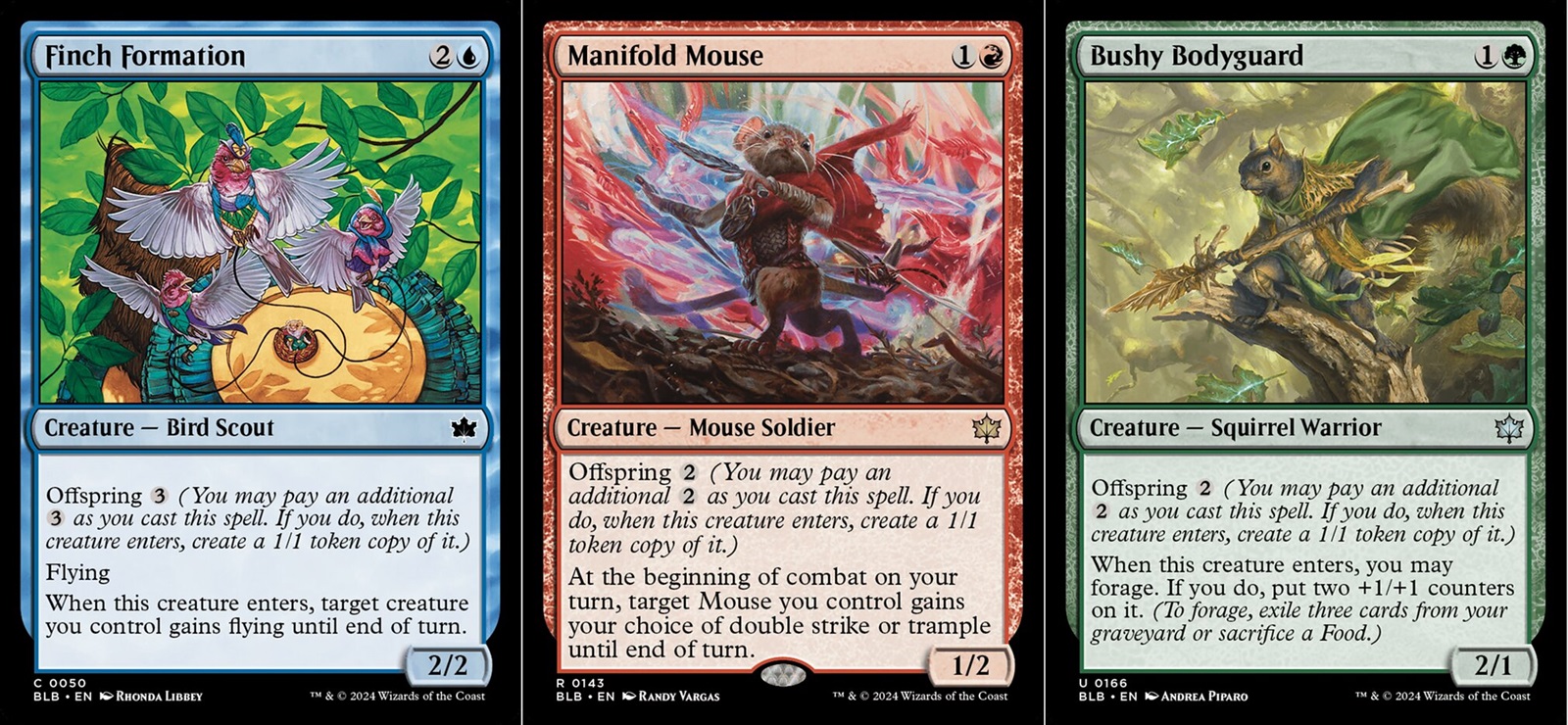
Three cards with Offspring
The next major mechanic is Gift. You may promise an opponent a gift when you cast a spell that gives something to your opponent for an additional effect on the spell. Gifts can include a 1/1 tapped fish token, a card, a Food token, or a Treasure token. The spell must resolve for the gift to be given to your opponent so you don’t have to worry about your opponent being gifted a card that then counters the Gift spell. Depending on your need it is an interesting choice on whether or not you want your opponent to receive something from your own spells. The tapped fish token isn’t likely to dramatically change the game, but your opponent drawing a free card might.
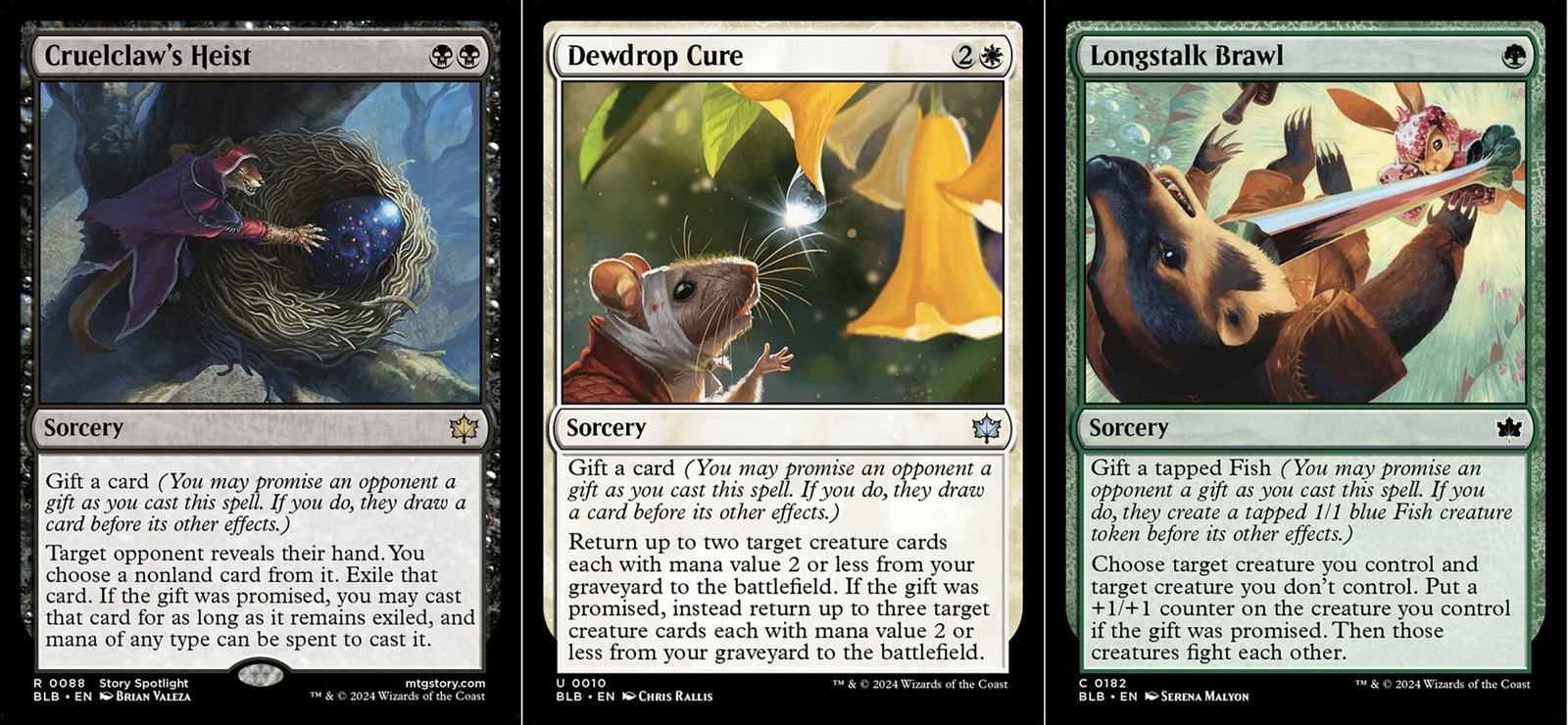
Three cards with Gift
The next three new mechanics are more focused into specific colors which help support the draft archetypes that Bloomburrow has. The Valiant keyword keyword is found on white/red mice cards and activates the first time the creature is the target of a spell or ability you control. This is like a mini version of Heroic from Theros and supports the aggressive nature of the white/red color pairing. If you’re attacking with Valiant creatures it helps to have a few combat tricks in order to trigger Valiant.
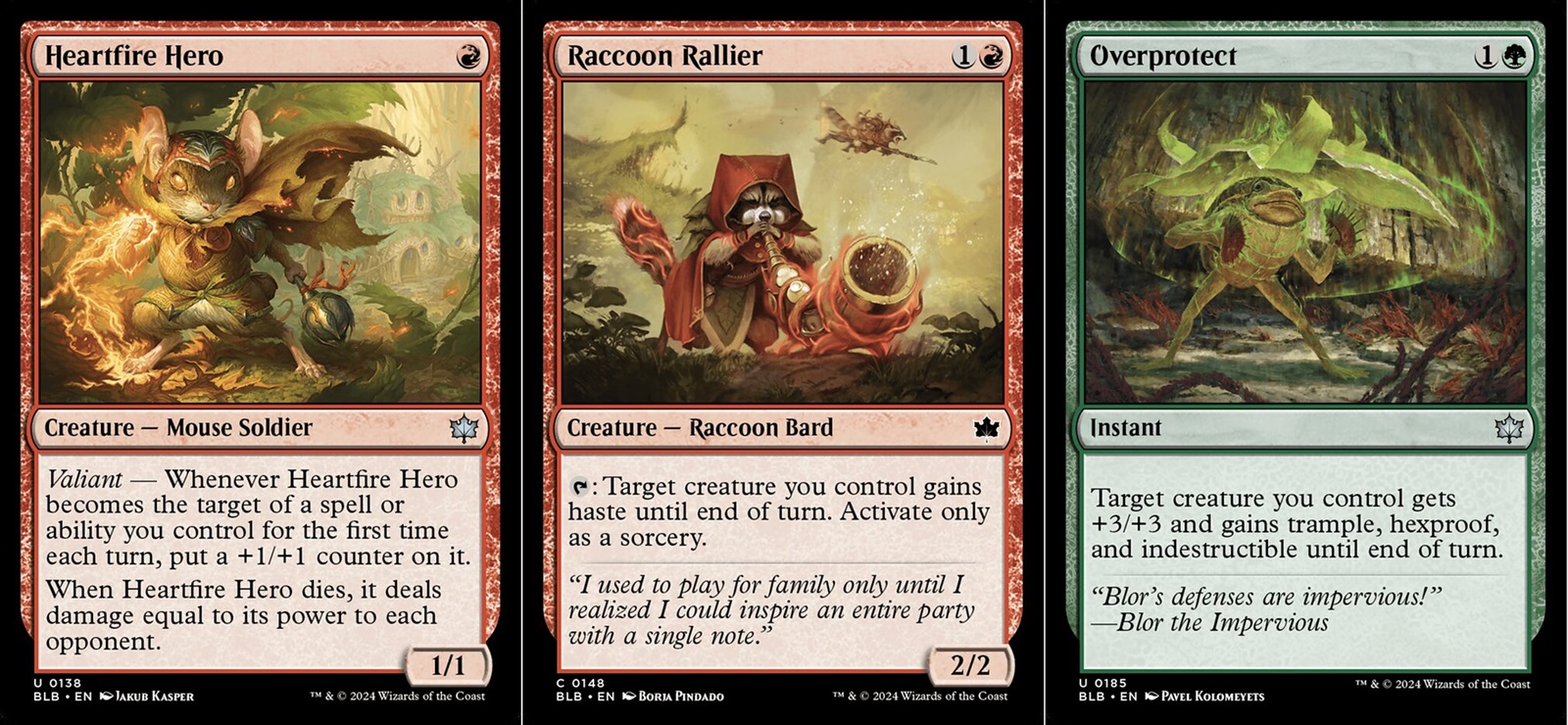
One card with Valiant and two cards that can trigger Valiant
Forage is a mechanic tied to the black and green squirrels of Bloomburrow. The squirrels are all about “recycling” and whenever a card allows you to forage, you may do so by exiling three cards from your graveyard or by sacrificing a Food token. Forage lends itself to games that go longer as you need cards in your graveyard (or Food) for Forage to be useful. By design Forage is usually attached to creatures that will help you outlast your opponent and Food tokens themself can also help you regain some life against aggressive decks.
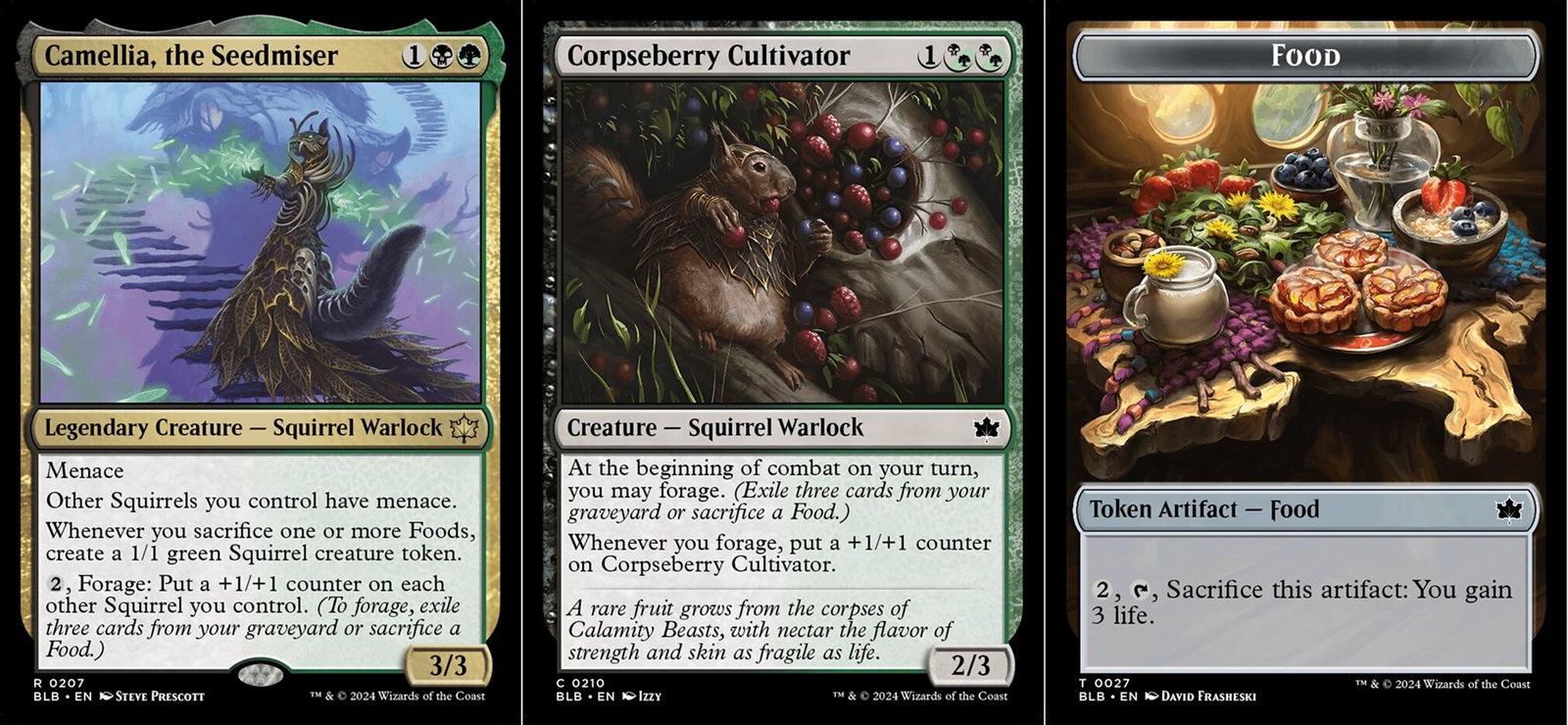
The squirrels of Bloomburrow are terrifying, but in a good way?
The Expend mechanic belongs to the R/G raccoons of Bloomburrow. While not nearly as thematic as Forage, Expends is a nifty mechanic. Expend X means whenever you spend X total mana to cast spells during a turn you get that Expend effect. Bloomburrow is specifically designed around Expend 4, but the mechanic could be used in the future at any number. Bloomburrow’s raccoons want to get to four mana as fast as possible and then be aggressive while using Expend to further support their attacks. This is the “big creatures attack your opponent” strategy and might be my favorite archetype in the entire set. Lastly, while only having five cards. There’s a cycle of mythic “season” cards that are new modal spells. Each season cards give you five pawprints to spend across their three modes. These are neat, they’re an interesting design space and I never thought I’d pay a paw print cost on a Magic card.
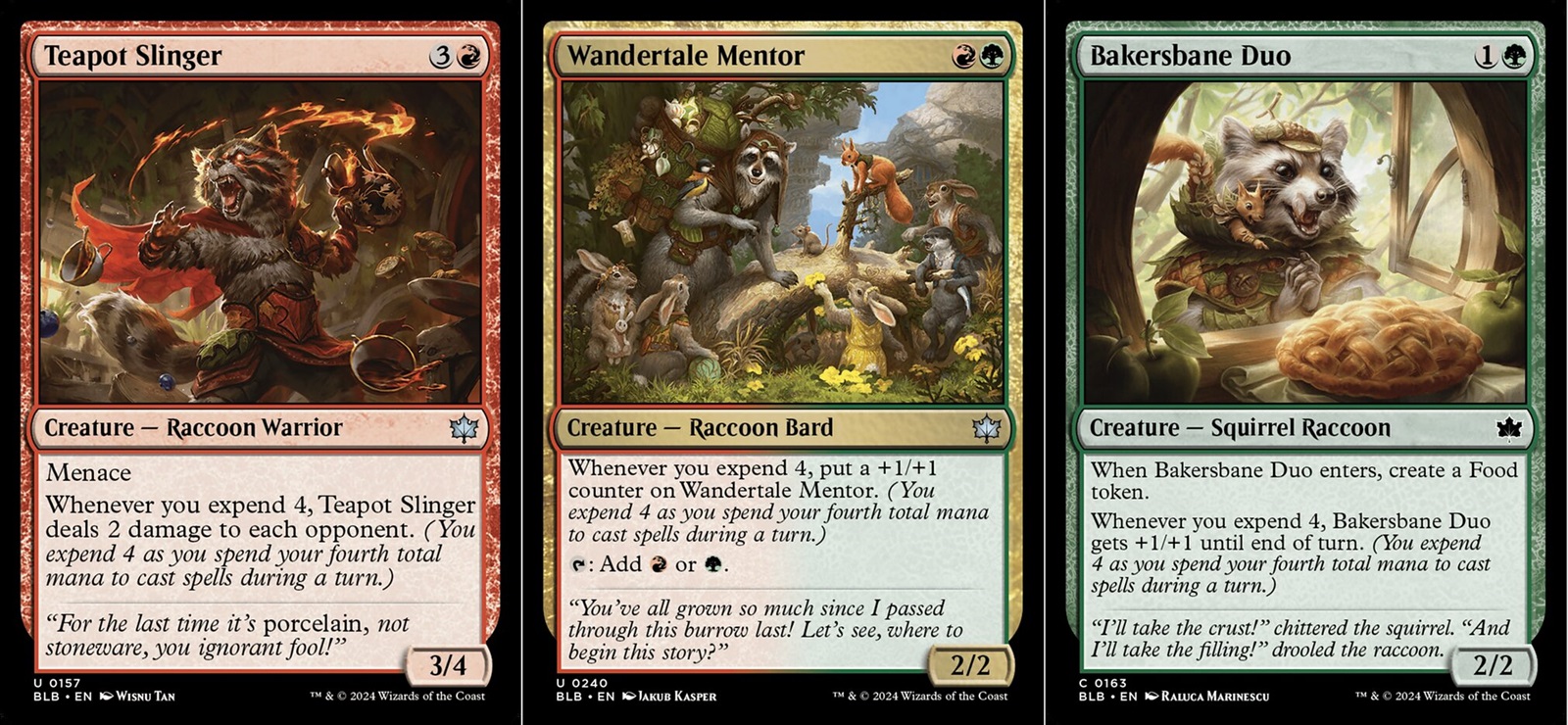
Three cards with Expend
Notable returning mechanics include class enchantments and Threshold that the blue/black rats use to empower their draft archetype. Flashback, Landfall, and even Storm can be found on a few cards. There’s a lot of mechanics within Bloomburrow and as we will discuss in the next section the mechanics aren’t the only brilliant bits of design within.
Pros – Repel Calamity
Bloomburrow is described as a typal set. What does typal mean? Typal is the term Magic uses to describe something focused around specific creature types. For Bloomburrow, those creature types are mice, birds, rats, lizards, raccoons, rabbits, bats, otters, squirrels, and frogs. Each creature type is associated with a two color pairing. For example, mice are found in white/red and are tied to the Valiant mechanic. Not every creature has a mechanic tied to them, but every creature does have a theme. It’s this design that makes Bloomburrow one of the best starting points for Magic.
Bloomburrow is a creature based set. The core of its gameplay is focused on combat. The fundamentals of attacking, blocking, and combat tricks make up most of your time with Bloomburrow. For new players this is integral in learning the game. It also doesn’t hurt that Bloomburrow’s combat is fun. Games can vary from aggressive opponents to longer, drawn out contests, but rarely does the game itself feel unfair. It’s hard to describe, but the sweet spot for limited games of Magic don’t want to end too quickly or stall out where neither player can win. Bloomburrow succeeds in finding that good middle ground. Whenever I would start a draft in Bloomburrow I’d end up starting down a draft lane and I’d always be happy with whatever I got. Oh, hey, this time I’m drafting otters, great! It speaks to a well designed set if I’m happy to play every draft archetype even the traditionally harder ones like blue/black. This doesn’t always happen for me in draft sets. For Bloomburrow I find all of its archetypes are fun to play.
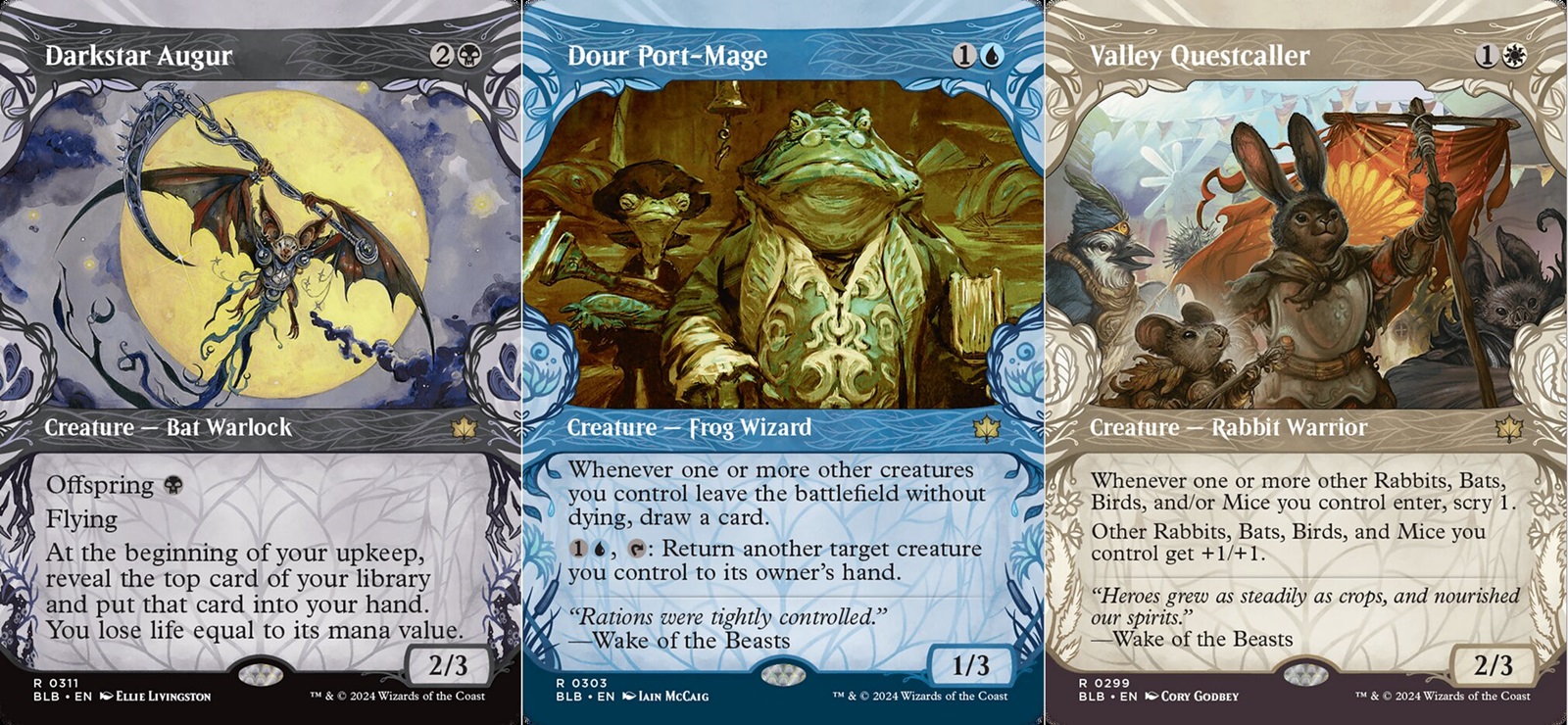
Three Showcase frames
I would also like to highlight the design aspects of Bloomburrow that help players draft fun and functional decks. All of these design elements help players, but here they especially help newer players make better choices when drafting. In order to communicate the two color pairings Bloomburrow has the normal two color cards. There’s also cards with hybrid mana that immediately tell a player what deck that card wants to be in, but offers the flexibility to be played solely as one color. There’s a cycle of monocolor “Duo” creatures that serve a similar function as they contain two creature types that are in that color. There’s a cycle of five village cards that list each relevant creature type for that color. There’s just a lot of built in design that helps players draft cards that will work well together. If this is all gibberish, which is fair, if you open a cool raccoon in your first pack, just keep picking more raccoons. Bloomburrow is designed so well that you should end up with a fun deck even if you have no idea what you’re doing. You’ll see that raccoons are both red and green communicating that you can pick cards from both of those colors. Once you know what colors you’re in, you’ll then be able to better evaluate the cards coming to you in those colors.
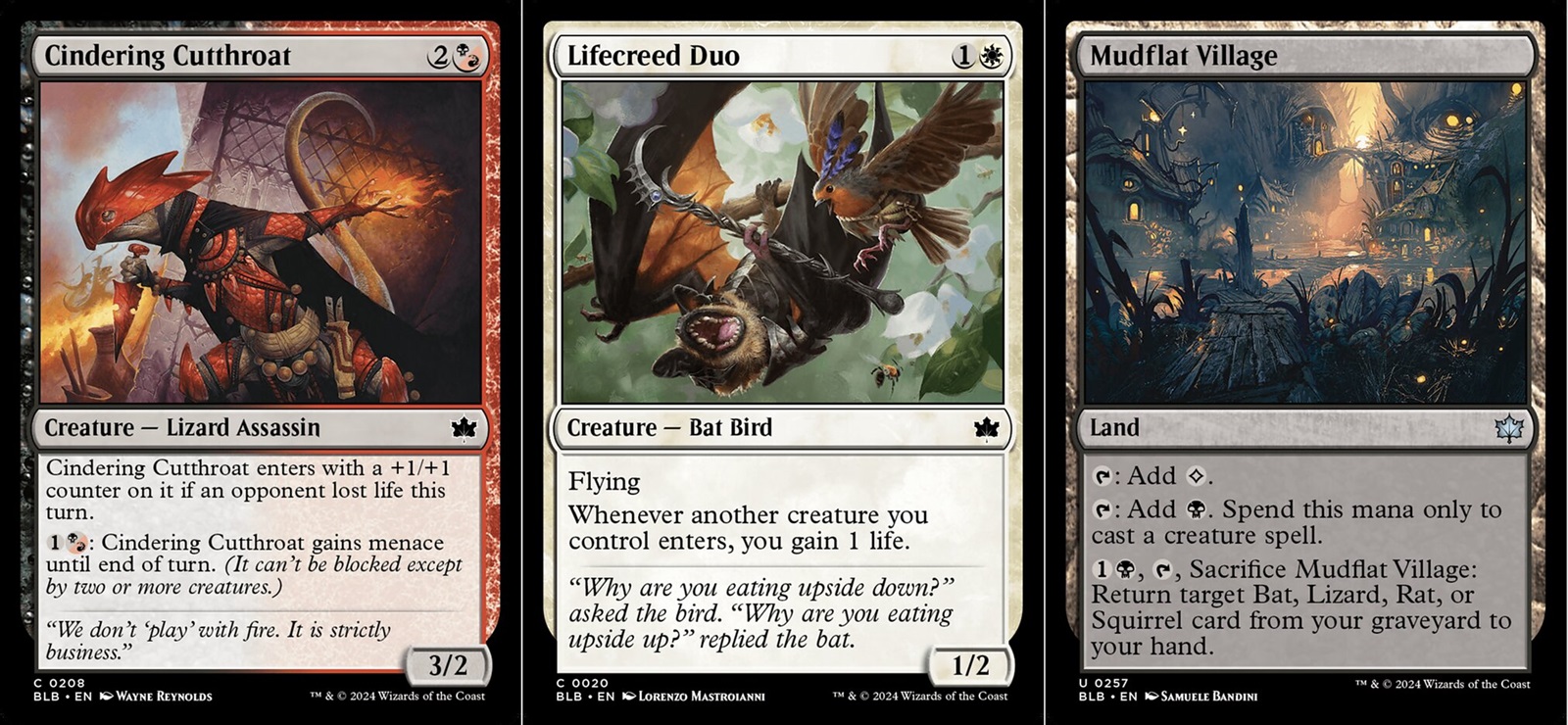
Cards that help communicate relevant creature types
There are cards that aren’t a part of the typal theme such as the elementals. These cards represent powerful “calamity beasts” that plague the world of Bloomburrow. When you see a card with an elemental type you can almost always assume the card is powerful enough to include in a deck, but won’t have any typal support. The kitty Ygra I mentioned earlier is one of these cards and is worth playing if you’re in black/green.
One interesting note is that The List has been removed for Bloomburrow. I don’t know if this will be permanent, but I’m a little sad as I thought The List was actually starting to be an interesting design space. If it returns perhaps the designers didn’t want it mucking around with the typal focus too much. There are still ten special guest reprints that can be in Bloomburrow packs, but they are appropriately rare and none of them are too game breaking.
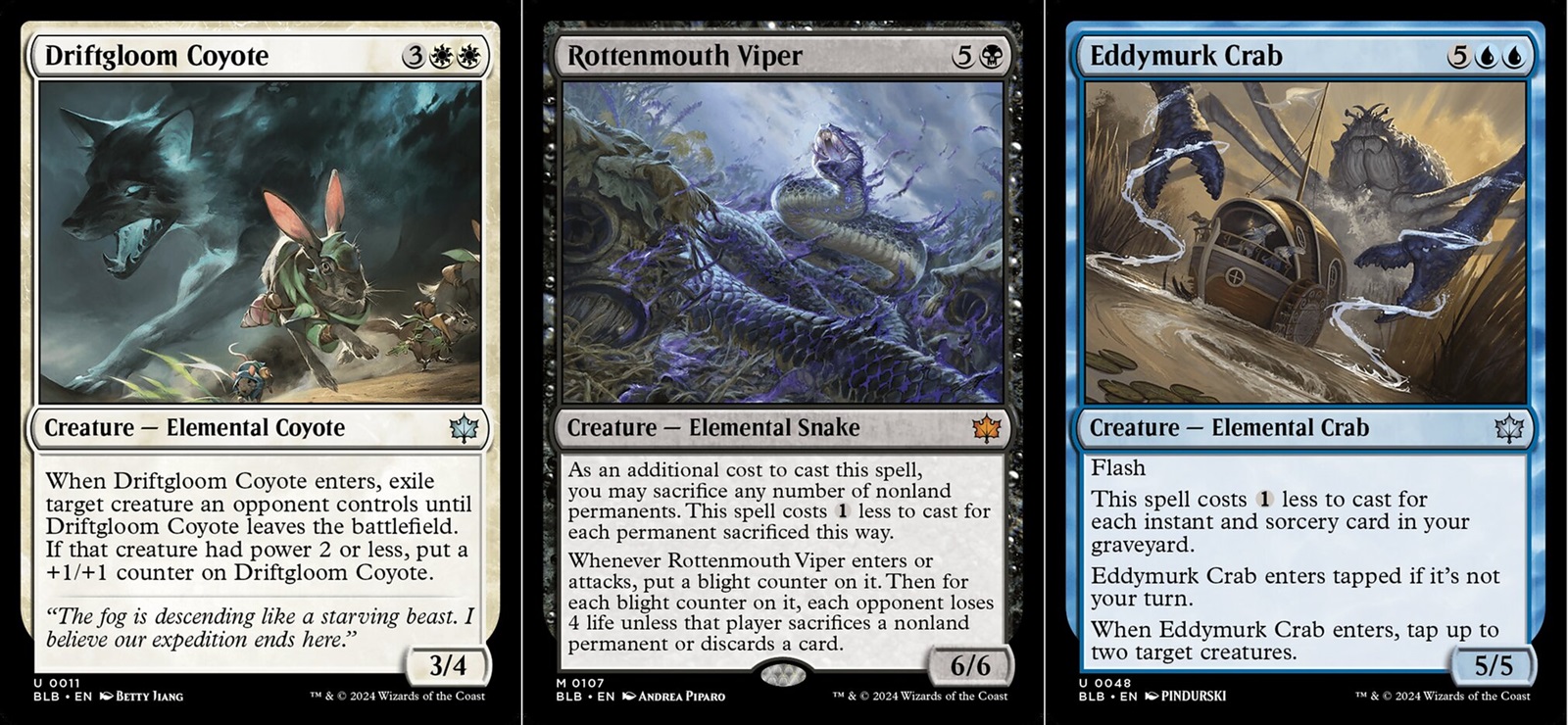
Three of the Calamity Beasts
If you’re brand new to Magic, I think the starter kit for Bloomburrow is a great starting place. Starter kits are two preconstructed sixty card decks and the Bloomburrow one is good, but nothing outside the bounds of what Magic starter decks usually are. The Bloomburrow Commander decks are also good. If you’re looking for a Commander deck with one of the animal themes on offer these decks are fine. I can’t say they are much different from other standard set Commander offerings.
Cons – Season of Loss
I don’t have a whole lot of negatives for Bloomburrow. If the cutesy animal theme isn’t for you, then uh…wait for Duskmourn? As a horror fan I’m eagerly awaiting Duskmourn, but even I have to acknowledge the power of tiny adorable animals. Just look at some of these offspring tokens:
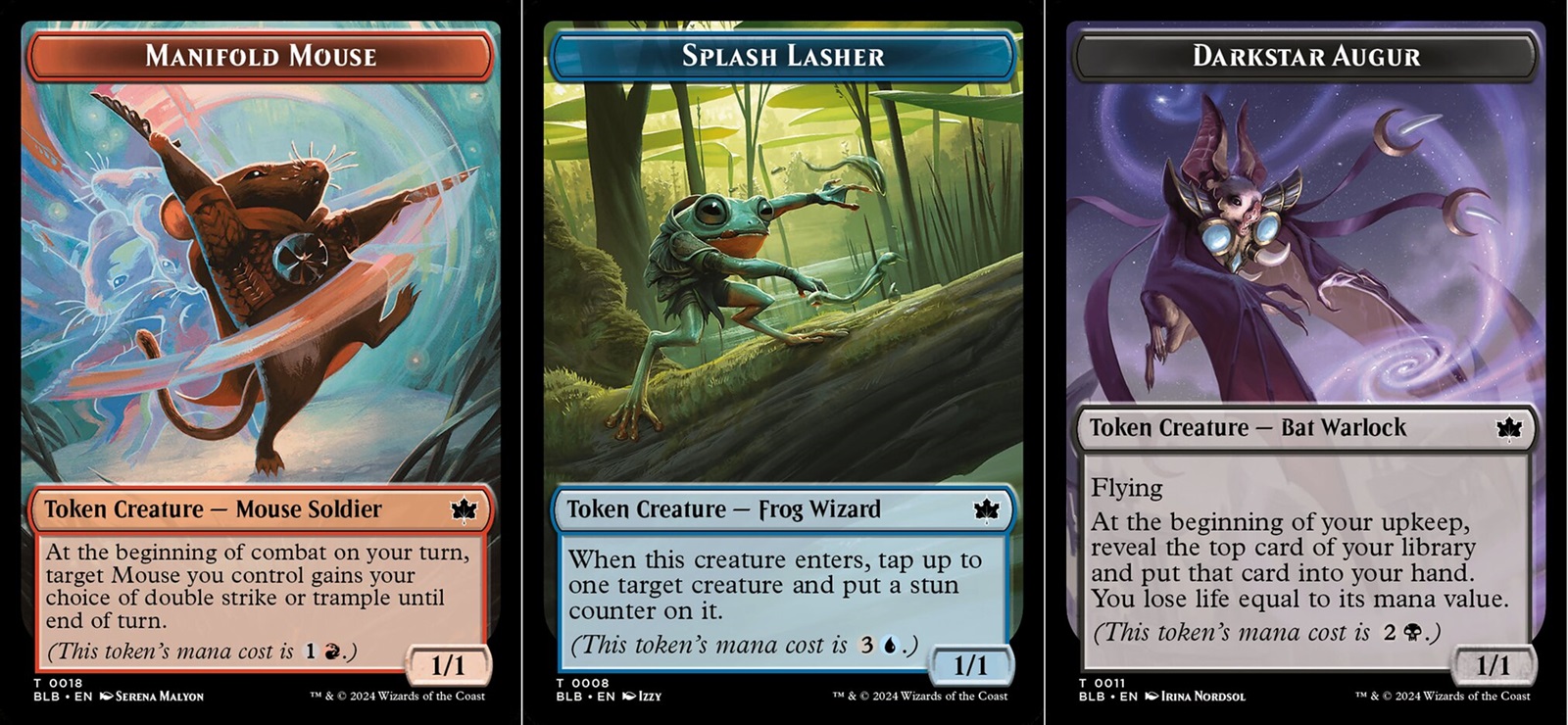
That mouse child is so excited to have two knives.
The only real downside I can think of is that because the design is so focused on the two color typal there isn’t a lot a player can do outside the two color pairings. There’s very little mana fixing within Bloomburrow so straying beyond two colors is a bad idea. For veteran players or people looking for high power Magic, Bloomburrow might be too simple. In other sets of Magic it is possible to put together five color shenanigans or draft decks outside the designed lanes. Bloomburrow feels quite restrictive in this regard.
Artwork/Theming – Artist’s Talent
While the artwork within Magic is always good, Bloomburrow feels like a world that is wholly realized through its artwork. The set just came out and I already want another set on Bloomburrow just to see more of its world. All of the basic artwork is fantastic, but then the additional treatments are even better. I’m hit and miss with the varying art styles across Magic, but here I adore all of the artistic choices. The full art seasonal lands communicates the perspective of the denizens of Bloomburrow as the seasons change. The alternate artwork on cards like the Calamity Beasts teach us that the heroes of Bloomburrow don’t fully understand them. The watercolor inspired showcase frames are just perfect for the tone that Bloomburrow has. I’m not super big on the anime style cards, but here I also think they fit the setting. The artwork for Bloomburrow is just, chef’s kiss. Unlike other sets nothing here seems out of place or is working against its theme.
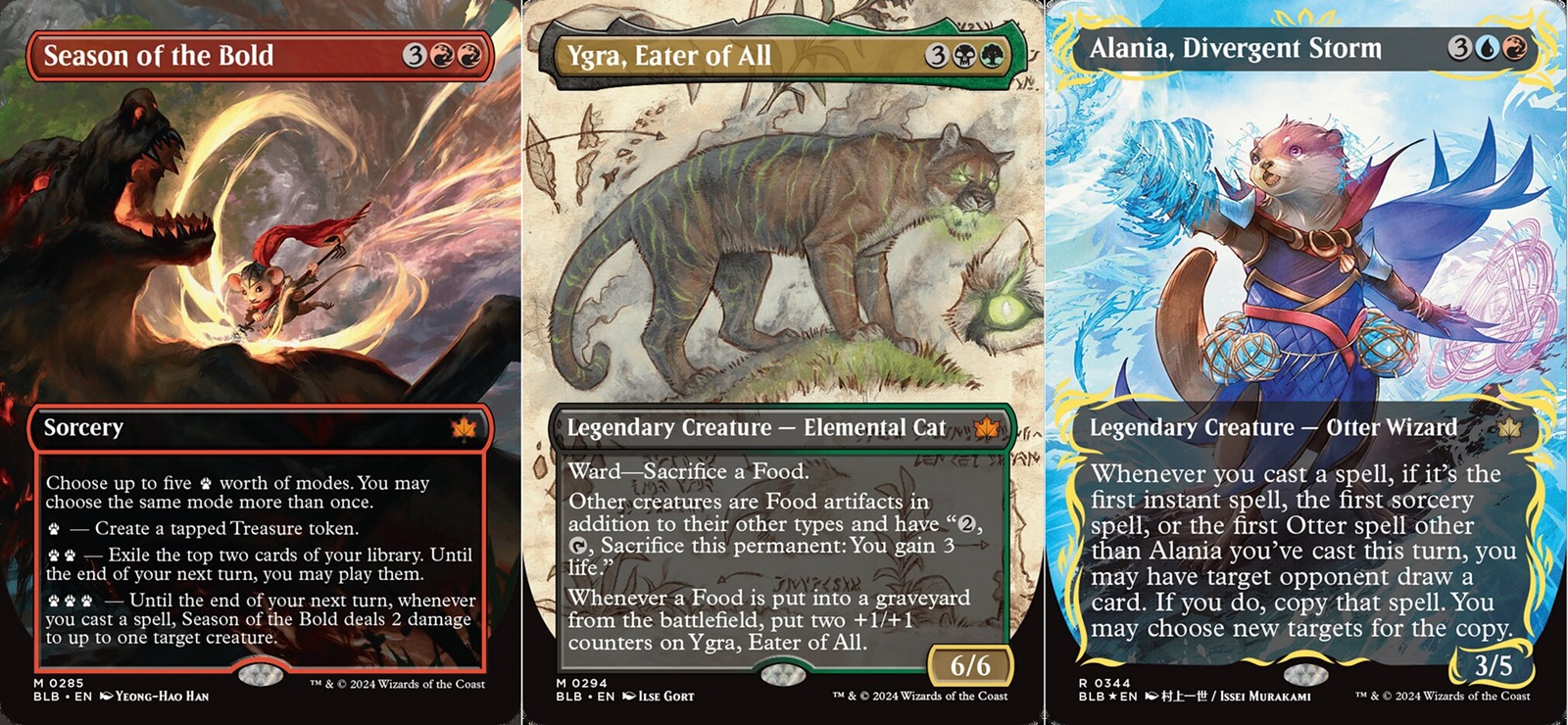
Two borderless cards and a raised foil (only found in collector boosters)
Chris began tabletop gaming in college and quickly fell into the addictive world of cardboard. Beginning with D&D and Catan he became an enthusiast of all things gaming; analog or digital. Chris, now a relapsed MtG player, loves connecting with people via gaming through RPGs, board games, and video games. A particular favorite is testing friendships through social deduction games.

Bloomburrow is fantastic. If the theme of cute small anthropomorphized animals banding together to save their world is for you, go play some Bloomburrow. This set is one of the best starting sets for Magic: The Gathering…maybe ever? I assume this is by design as the typal two color draft pairings are well communicated and a ton of fun to play. There’s a small criticism that the draft may feel a bit “on rails,” but Bloomburrow is so much fun I don’t think that matters. The world of Bloomburrow is brought to life by amazing artwork that fully showcases its setting. If you’ve ever wanted to learn Magic, or you’re just interested in Bloomburrow itself, I can recommend this set to everyone who’s curious.
PROS
- A brilliantly designed draft environment that focuses on creature types and two color pairings
- An excellent setting realized through fantastic artwork
- Great gameplay that offers complex choices without being overwhelming or feeling unfair
CONS
- Draft lanes feel “narrow” and players would struggle to go outside them
See below for our list of partners and affiliates:
